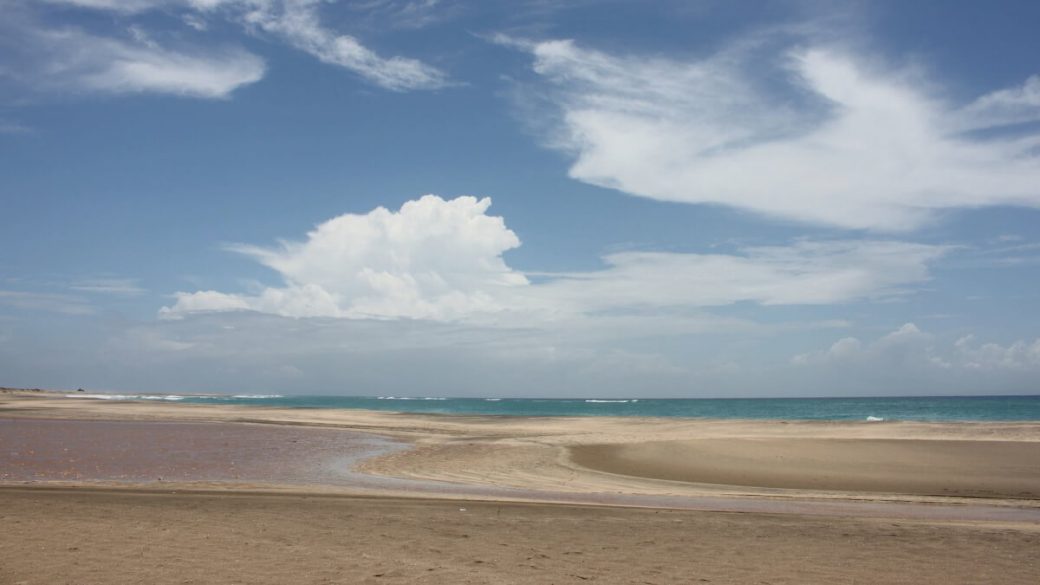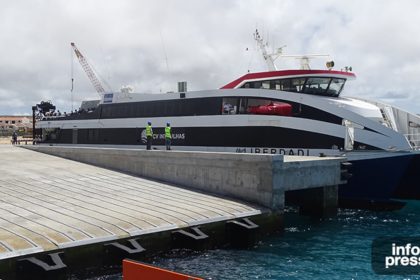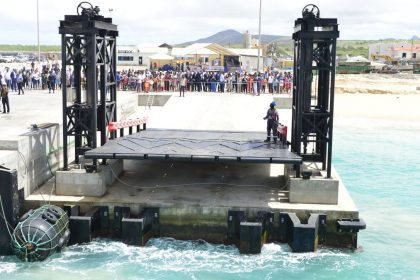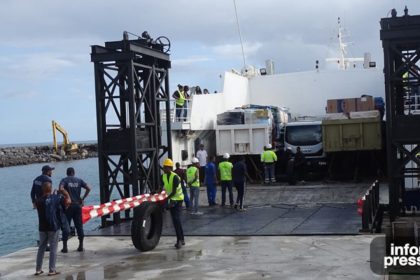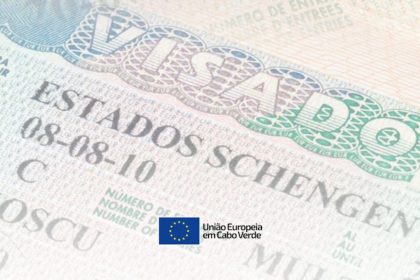The island of Maio (Ilha do Maio) is located east of Santiago, which is part of the group of islands called the ‘Sotavento’, which forms the eastern end of the Cape Verde archipelago. Maio looks deserted, flat and barren. Its landscape is extremely similar to the near neighbour of Boa Vista. Long beautiful deserted beaches, uncrowded and extensive stretches of unspoilt white sandy beaches trimmed with coconut palms and exotic flora. History states that the island was discovered on the 1st of May 1460, and it was named after the feast of the Maias that also gave rise to the name of the month “Maio” (May) on the calendar.
The nearest international airport is located near to Praia on the island of Santiago; an internal flight from Praia to Maio takes on 10 minutes to Vila do Maio, or about 1 hour to cover the distance of 50 km separating the two islands. The island of Maio is about 180 km from Sal and Boa Vista is about one hundred kilometres from Maio.
Weather on Maio resembles that of the other islands, characterised by the presence of trade winds that blow constantly from the northeast. In summer, the sky tends to fill with clouds at higher temperatures that increase evaporation of the ocean. The island is relatively flat, although the altitude of the highest peak, Mount Pinoso (painful), is more than 430 metres.
Vila do Maio is a small village, with the sunny streets with low and colourful houses, along cobbled. Life here is quite relaxed and carefree; there are several restaurants and a beautiful Portuguese Baroque style church Nossa Senhora da Luz.
Just outside of Vila do Maio to the north is the beautiful salt marshes, once the economic mainstay of the island. Here you can take some stunning pictures, including various shades of colours that turn from yellow to turquoise, and pink to purple. Nearby is a very beautiful beach of white sand while a little further north is the beach of Morro (Praia do Morro) sands with more gray but clear blue sea and very inviting for a swim.
The beaches of the Maio are beautiful, but the best beaches are located in the north of island. These beaches are secluded, deserted and left to be discovered and their splendour uncovered. Most beaches do not have services, but that’s their wild nature that makes them so attractive; Bay of Santana, and Bay Real Praia do Galeao.
Some of the islands beaches are populated by turtles; favorite hatching locations in which to lay their eggs. Protection of the turtles and their habitat is important, so activities such as dune buggy rides are not permitted along these beaches.
The island is an ideal location for holidaymakers wishing to find a quiet, peaceful beach location, with sleepy local towns and warm, clear waters. The landscape of the island is desert-like with various sand dunes, an occasional palm filled oasis and minimal evidence of its volcanic past.
Ilha do Maio Tourism
The Island of Maio offers visitors tranquillity and total relaxation in a setting surrounded by sun and sea, with beautiful beaches, exotic places and mild temperatures. Maio is an island of 365 days of sun and sea.
Maio and charms the visitor. Its lunar landscape made up of plains, sand dunes, the constant presence of the blue sea. And also for the atmosphere of tranquillity and remoteness that lives and feels the strangeness of the island almost a separate world, where the existence keeps the pace …
With Maio’s variety of fish and shellfish this allows visitors to enjoy fresh, great quality seafood such as lobsters and octopus.
The Island of Maio has made a serious commitment to tourism and has already built several tourist facilities and other demarcated areas for launching new projects, mostly from foreign investors.
Equipped with the required infrastructure such as port, airport, and roads, all the villages were electrified and the ring road recently renovated. Maio also has telecommunication services, good hotels, running water, electricity in all villages, and pathways to the town’s beach.
Today the island has modern communications networks and Cape Verde Telecom Company Limited is responsible for the telecommunications network which consists of the network telephone, telegraph and internet.
In Morro, a small hill town surrounded by palm trees is a small craft shop where ceramics are produced which have interesting pieces for decoration in the home.
The main town of Vila do Maio has some of the best options for hotels and Guesthouses, whereas in the Morro there are two holiday villages.
Hiking along the coast between the long stretches of beaches and the rough terrain is advised to really appreciate the details of nature, whilst discovering the traditions of its people, historic buildings, and beautiful scenic landscapes.
Tourists can enjoy some typical dishes of the island, such as the famous Cachupa tchassina in addition to the couscous, bran, camoca and Lobster, lapa, barnacles and squid.
Beaches
The Island of Maio has many beaches of fine white sand, transparent and warm clear water. The highlights of Maio’s beaches are the of the beach of Ponta-Preta, Praia Real, Pau Seco, Porto Cais, Bitche Rotcha, praia de “Boca di Morro”, baía da Calheta amongst others.
To gain access to some of the beaches it’s advisable to use 4×4 jeeps. Praiona beaches (Praia Gonçalo), Prainha (Pedro Vaz) and Boca Ribeira (between Alcatraz and Pedro Vaz) are also worth a visit for their beauty, white sand and blue sea.
Leisure, Nature and Discovery
The Island of Maio has a huge potential for tourism and its ecology is very interesting. Pollution is something that fortunately has not yet reached the island. The varied and abundant marine life will delight any fisherman and naturalist. The beaches are vast and deserts are inhabited by a number of species which spawn at sea. The turtles also use the beaches to lay eggs.
So those who like to sun and swim all year round, no place can be better than these fine white sandy beaches. So those who prefer to find the attractions of the island by themselves, you can discover areas of exotic vegetation incredible – coconuts, palm trees, beautiful acacias, and wild figs. The honesty and hospitality of local people is something that helps make the holiday more enjoyable for visitors.
Places of interest:
The Mother Church built in 1872
The lighthouse of St. Joseph
Natural Salina
Atelier Crafts (Hill)
The largest forest perimeter of Cape Verde (Calheta) and its coal oven
The newly extended airport of Maio is longer and can therefore accept larger incoming aircraft. The airport is about 2 km from the town of Vila do Maio. The town is directly opposite the sea which also contains the harbour and a beautiful white sand beach where local fishermen leave their boats. Nearby is the fort (orte de São José) built in the eighteenth century to defend the town from pirate attacks. A little further up is the magnificent church, surrounded by gardens of beautiful flowers. In the same area there is a cooperative building with a very unique architecture created in the form of an “fungos africanos”.
TOWN OF VILA DO MAIO
Vila do Maio is the administrative centre and capital of the Island of Maio, which is characterised by its tranquillity, its colourful houses, and a Baroque style church from the late nineteenth century (1872). Vila do Maio was also known as “Porto Inglês” (English Harbour) as once there was a thriving business in the exploitation of salt by the British who used the port to export the product to Europe and America.
SALINAS
The views of the extraordinary salt pans (Salinas), which can measure 5000 metres long and 1500 metres wide, are an outstanding sight for the visitors to Maio. The vegetation in the area is unique and breathtaking and two typical species, known locally as “Maraca” and “Salsola soda” are to be found here.
MORRO
Morro is a small town built along the road. Local artisans manufacture pots and other kitchen utensils which are very interesting for visitors. There is a very attractive beach and its clear waters are excellent for fishing. Nearby, between Monte Batalha and the coast is a region where there is no vegetation. The miracle is that it seems that it makes locals feel like they live in the desert.
CALHETA
Calheta is located near Morro and is the second largest town of the island and is a small fishing village. It was the region where the reforestation was first introduced to Maio. Morro is about 11 km from Vila do Maio, and has about 1107 inhabitants.
The main occupation of residents is fishing, FAIMO work in the Ministry of Agriculture, whose principal activities are the preparation of land for reforestation, forest management and other services.
The water supply in the town of Calheta to households is a reasonable with piped water and two water fountains. This water is not better and not enough to supply the population. Calheta de baixo has two beautiful beaches, protected by rocks.
The forest near to Calheta is considered one of the largest in Cape Verde where there are still many species of trees such as eucalyptus, acacia, etc.. In addition, new trees are planted annually with the aim of not only extending the perimeter but also to conserve the species.
MORRINHO
Near to Morrinho extended salt pans can be found about 1200 metres from the sea. The baia de Santana is a deserted beach in the shape of a semi-circle. It is the beach where the fishermen go fishing from Morrinho and turtles also go to spawn. Nearby there are two beautiful beaches: the baia de Porto Cais and Praia Real, where turtles can be seen and where there are shells and crustaceans abound.
FIGUEIRA DA HORTA e RIBEIRA D. JÕAO
Figueira da Horta looks like an oasis, about 6 km from Vila do Maio, the scenery is truly seems desert-like, with unusual sights. Here nature is alive, and well adapted to desert conditions. There is abundant water and rich green vegetation. The visitor will also find another “fungo africano” construction which again represents the local cooperatives. Ribeira D. João is a magnificent oasis and well worthy of a visit.
